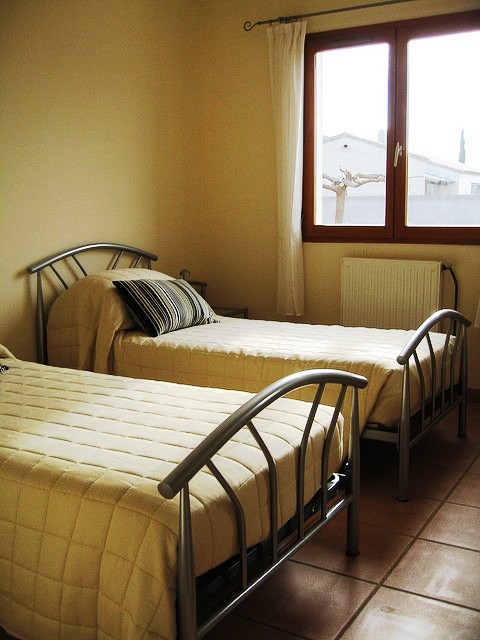Most northwesterners are well provided with housing. In fact, northwesterners near or above the median income are among the best-housed people of all time: we have a lot of private indoor space.
Consider bedrooms, for example. Through most of history, most people shared bedrooms. Many even shared beds. I’m not just talking about couples. When Abraham Lincoln was a lawyer riding the circuit in Illinois, he routinely shared a bed with others in his business. The future president of the United States did not think twice about crawling into bed at the end of the day with a fellow attorney. That’s how people lived.
When I spent three months in Central America in 1986, I lived with the family of a shoemaker.
The whole family — mom, dad, and eight kids — shared one sleeping room, and they were better off than many families in their town. In fact, their living standard was, statistically speaking, right around the mid-point of the world population at the time. Generations of North Americans raised their families in little houses and apartments. My grandmother’s family, with six kids, lived in a small apartment in New York, after they arrived in the New World from Poland.
Consider my own living situation as an illustration. When I first moved my family into my current house in 2000, we had three bedrooms for five people. We remodeled the house so each of my three kids would have their own bedrooms. That’s the normal expectation of middle-class Cascadian families nowadays: one room for each couple and one room for each other family member. A few decades ago, the expectation was that kids would share rooms. But private bedrooms are a good way to live, affording privacy and independence along with conviviality in shared spaces. I consider myself, and my kids, fortunate to have been able to afford it.
When my ex-wife and I divorced five years ago, she moved to a nearby three-bedroom apartment, and I stayed in the house. Three of the four bedrooms of my house began sitting empty during the weeks when my kids were at their mom’s. Thus, instead of four bedrooms for five people, we had seven bedrooms. Later, my eldest left the nest and my younger two started college. Counting dorm rooms, my eldest’s apartment, my ex’s apartment, and my house, the bedroom tally for the five of us has risen to nine, triple what it was in 2000.

Region-wide housing statistics show that my surfeit of sleeping quarters is not atypical. If at light’s out this evening all 12 million residents of the Northwest states of Idaho, Oregon, and Washington retired into bedrooms, one person per room, some 2 million bedrooms would remain empty. The Northwest has fully 15 percent more bedrooms than people. Even this comparison understates the region’s bounty of bedrooms, though, because most couples and some children share rooms. On conservative assumptions (spelled out at the end of this article), more than 5 million Northwest bedrooms are unoccupied on any given night: 36 percent of the Northwest’s bedrooms overall; 35 percent in Washington; 36 percent in Oregon; and 40 percent in Idaho. In the city of Seattle, the most densely settled part of the Northwest states — with the most apartments, singles, and small households — the figure is still around 27 percent.
Comparable data are harder to come by for British Columbia, but the situation appears to be similar. A decade ago, demographic research group Urban Futures estimated that 29 percent of homes in greater Vancouver held at least one unoccupied bedroom. That translates into more than 220,000 empty rooms in the Cascadian city most vexed by astronomical housing prices.
Furthermore, these tallies only cover the region’s houses and apartments. They exclude hundreds of thousands of hotel rooms, college dormitories, hospital suites, prison cells, military barracks, and other institutional quarters.
As I said, we have a whole lot of private, indoor living space in Cascadia!
Most of the people who own these extra bedrooms may be happy to have them empty. They use them as guest rooms or studies. Or the rooms are in second homes. Or, like me, the owners’ kids have rooms at both parents’ homes. Or, also like me, they are keeping their kids’ rooms available during the extended modern process of fledging. That’s their right. But public policies should get out of the way of those who want to rent those bedrooms out. Among the more than 5 million of Cascadia’s bedrooms in which no one is sleeping, there are probably hundreds of thousands that would already be occupied if local regulations did not criminalize roommates. More would emerge over time, as builders adjusted to a pro-roommate housing economy.
One use for Cascadia’s 5-million-plus extra rooms, Sightline’s Chris LaRoche argued earlier this year, is as informal bed-and-breakfast space, made possible through sharing-economy websites such as Airbnb and Couchsurfing. As Chris feared would happen, the hotel industry has begun inciting a regulatory backlash against informal hoteling, although it has yet to strike in Cascadia. (Were I home enough to greet and host guests, I’d enthusiastically use Airbnb to rent out my empty rooms when my kids are away for school.)
A second use is to convert idle bedrooms to “mother-in-law” apartments. Several outdated regulations block such units (and I plan a separate article to discuss those rules). In most cities, occupancy limits are one of them. Unlike other dwelling units, secondary suites do not come with an occupancy quota of their own. They share the primary unit’s occupancy limit. My Capitol Hill friend’s house, which I discussed in the previous article in this series, includes a two-bedroom, ground-floor apartment, currently occupied by a mother and her two young children. That’s three of the house’s nine residents, leaving seven bedrooms for the six people in the main section of the house. But Seattle code says no more than eight people may share a house if any of them are not family, even if some are in an in-law apartment.
A final use for the one-third of Northwest bedrooms that are unoccupied is to lease them out to tenants. In my next article on occupancy limits, I’ll detail how they hamstring this opportunity.
NOTES: To estimate the share of Northwest bedrooms that are unoccupied, I used data from the Census Bureau’s American Fact Finder. I assumed that 95 percent of married couples who live together share a bedroom. To get the number of married couples who live together, I used the American Community Survey 2011 three-year estimate of the number of married women with a spouse present. I doubled it to reflect their husbands. I guesstimated the number of other co-habiting couples and children who share bedrooms at 1 million people across the whole Northwest (compared with 4.8 million married people). I removed from the population those people listed in the census as living in group quarters.
Special thanks to Mieko Van Kirk for research assistance for this article.


Comments are closed.